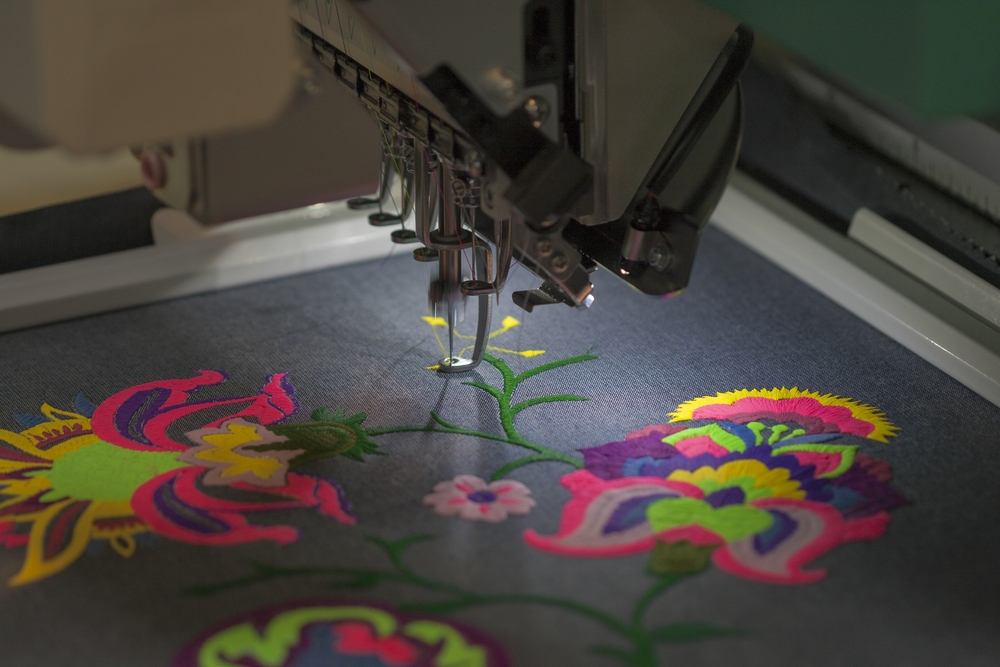Custom Digitizing for Embroidery: Customized to Your Requirements
Custom Digitizing for Embroidery: Customized to Your Requirements
Blog Article
Understanding the Embroidery Digitizing Process: Your Ultimate Guide
Embroidery digitizing is a thorough craft that needs precision and know-how to convert elaborate layouts into digital layouts for device needlework. As artisans get started on this trip to master the embroidery digitizing procedure, an extensive understanding of the essentials sets the foundation for excellence.

Comprehending Needlework Digitizing Basics
Embroidery digitizing basics create the foundation whereupon intricate layouts are translated right into machine-readable styles for specific sewing. This preliminary action in the embroidery digitizing process is essential for guaranteeing that the last stitched item is a loyal depiction of the original layout. Comprehending embroidery digitizing fundamentals includes understanding vital ideas such as stitch kinds, sew instructions, thickness, underlay, and draw payment.
Sew kinds play an essential role in identifying the aesthetic and textural end result of the stitched design. By picking the ideal stitch type, whether it be satin, fill, or running stitch, digitizers can attain the desired result and enhance the general high quality of the embroidery. In addition, stitch instructions affects the circulation and measurement of the design, while density determines the spacing and coverage of the stitches.
Moreover, underlay sewing supplies stability to the layout by protecting the fabric and stopping distortion throughout the needlework procedure. Pull compensation is one more vital consideration to neutralize the all-natural tendency of fabric to contract when stitched. Mastering these needlework digitizing essentials is fundamental for creating professional-quality embroidered products.
Choosing the Right Digitizing Software
Picking the ideal digitizing software program is a vital decision that significantly affects the efficiency and top quality of the embroidery digitizing procedure. Digitizing for Embroidery. When picking the best digitizing software, it is necessary to consider aspects such as the complexity of styles you plan to create, the user-friendliness of the software program, the degree of client support offered, and the compatibility with your needlework maker
There are different digitizing software program alternatives available in the market, ranging from basic programs for novices to advanced software for professional digitizers. Some prominent choices consist of Wilcom EmbroideryStudio, Hatch Embroidery Software, and PulseID. These software supply a variety of devices and functions to help you develop complex designs with convenience.
Prior to deciding, it is advisable to explore the different software program alternatives click to find out more via free tests or demonstrations to identify which one best fits your requirements. Furthermore, checking out testimonials and looking for suggestions from seasoned digitizers can provide valuable understandings right into the staminas and weak points of each software (Digitizing for Embroidery). By carefully examining your requirements and contrasting the features of various digitizing software application, you can make an enlightened option that enhances your embroidery digitizing process
Digitizing Devices and Techniques

Optimizing Design Setup for Needlework
Understanding the ins and outs of style setups is fundamental in achieving optimum results in the embroidery digitizing process, building upon the structure laid by recognizing digitizing devices and methods. When great site maximizing design settings for embroidery, it is important to think about elements such as stitch kind, density, padding, draw settlement, and enrollment. Registration setups align various aspects of the style accurately, keeping overall style integrity.

Troubleshooting Common Digitizing Issues
When encountering usual digitizing problems during the needlework process, it is necessary to comprehend the origin triggers and execute effective services promptly. One typical issue is stitch thickness issues, where stitches may be also thick, triggering the fabric to pucker, or too thin, resulting in gaps in the design. Adjusting the stitch density setups in the digitizing software program can aid settle this concern.
An additional regular obstacle is thread breaks throughout the needlework procedure. This can occur as a result of different factors such as incorrect stress settings, dull needles, or utilizing low-quality thread. Ensuring correct maintenance of the needlework machine, consisting of routine needle adjustments and stress changes, can decrease the occurrence of thread breaks.
Additionally, design registration mistakes can cause misaligned aspects within the needlework layout. Checking the style placement in the digitizing software and making required adjustments prior to sewing can aid in preventing this issue. By attending to these typical digitizing problems quickly and effectively, you can ensure a smoother embroidery click for source procedure and top notch ended up items.
Verdict
Finally, grasping the needlework digitizing procedure needs a solid understanding of the fundamentals, the ideal choice of software, and knowledge of devices and strategies. Optimizing design setups and repairing common digitizing concerns are critical actions in guaranteeing high-quality embroidery results. By adhering to these steps faithfully, one can accomplish precision and efficiency in the digitizing procedure.
Report this page